-
The parish was founded in
June 1967 by Archbishop Philip Pocock. Mass was celebrated by Father
Christopher Bennett, the founding pastor, every week in St. Alfred's elementary
school. Originally, the parish was to be called Saint Alfred's Parish, but in February 1969
Father Bennett petitioned to have the parish name be changed to Saints Martha and
Mary and it was subsequently approved by Archbishop Pocock.
-
In April of 1969, a structure was
completed; a structure that would have various functions. During the weekends,
it would serve as a place of worship, and during the week, it could be used as a
hall. It was consecrated by Archbishop Pocock.
-
The needs of the
community outgrew this multi-functional building so on the 13th of September,
1983, it was was demolished. Of the original church, the Knights of Columbus
hall and the chapel remain today.
-
On October 9th, 1983 construction on
the current building began. It was completed in December 1984 and was dedicated
by Cardinal Gerald Carter on the 25th of May, 1985.
Our Patron Saints
Martha
-
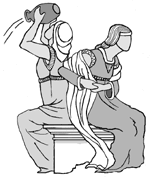 The sister of Lazarus and of Mary who is usually identified with Mary
Magdalene, Martha received Christ in their household at Bethany, which was
specially loved by him (Luke 10:38-42), on which occasion he gently reproved her
for her complaint that her sister Mary did not help her sufficiently in the
necessary preparations. The words of Christ were traditionally represented as
indicating the excellence of the contemplative life (represented by Mary) over
the cares of the active life, represented by Martha. In the Gospel of John,
Martha also appeared on the occasion of the Raising of Lazarus (John 11:1-46),
when her faith in Christ and his divine power was the occasion for the famous
words 'I am the resurrection and the life', and for the miracle of Lazarus'
return to life. It was also recorded that Christ once again had supper at
Bethany, where Martha served him six days before the Passover (John 12: 1-2).
This is all that can be known of her from the New Testament; there is no early
tradition about her death. The sister of Lazarus and of Mary who is usually identified with Mary
Magdalene, Martha received Christ in their household at Bethany, which was
specially loved by him (Luke 10:38-42), on which occasion he gently reproved her
for her complaint that her sister Mary did not help her sufficiently in the
necessary preparations. The words of Christ were traditionally represented as
indicating the excellence of the contemplative life (represented by Mary) over
the cares of the active life, represented by Martha. In the Gospel of John,
Martha also appeared on the occasion of the Raising of Lazarus (John 11:1-46),
when her faith in Christ and his divine power was the occasion for the famous
words 'I am the resurrection and the life', and for the miracle of Lazarus'
return to life. It was also recorded that Christ once again had supper at
Bethany, where Martha served him six days before the Passover (John 12: 1-2).
This is all that can be known of her from the New Testament; there is no early
tradition about her death.
- But a medieval legend arose which connected her, Mary Magdalene, and Lazarus
with the evangelization of Provence: Martha's supposed relics were discovered
and enshrined in 1187 at Tarascon. Her iconography depends both on the authentic
data of the Gospel and on the historically worthless Provencal legends. She is
invoked as the patron of housewives and lay sisters, and her attributes are a
ladle, a broom, or a bunch of keys; but she is also represented with a dragon,
which she was supposed to have tamed at Tarascon by aspersing him with holy
water and wrapping her sash round his neck, before leading him to Arles, where
he was killed. She is also represented in scenes of the Raising of Lazarus, as
in the fine Romanesque sculptures at Chichester cathedral.
- Feast Day: July 29th in the West. There is much divergence about her feast in
antiquity: an interpolator in the Martyrology of Jerome places her with her
brother and sister on January 19th; Ado on October 17th; while the Greeks place
her on June 6th among the holy women who brought spices to anoint Christ's body.
Mary Magdalene
-
This follower of Christ, out of whom he had cast
 seven devils'
who stood by his cross, went to anoint his body at the tomb and to whom the
risen Christ appeared on Easter Sunday morning, has often, but not universally
in the West, been identified both with Mary the sister of Martha of Bethany and
with the woman who was a sinner, who anointed Christ's feet in the house of
Simon (Luke 7: 37). This identification, propounded by Gregory the Great, but
now rejected by the Roman Calendar, was accepted in the traditional cult of Mary
Magdalene and by the artists who depicted her. seven devils'
who stood by his cross, went to anoint his body at the tomb and to whom the
risen Christ appeared on Easter Sunday morning, has often, but not universally
in the West, been identified both with Mary the sister of Martha of Bethany and
with the woman who was a sinner, who anointed Christ's feet in the house of
Simon (Luke 7: 37). This identification, propounded by Gregory the Great, but
now rejected by the Roman Calendar, was accepted in the traditional cult of Mary
Magdalene and by the artists who depicted her.
- Legend in both East and West added apocryphal details to the simple data of
the Gospels. In the East she was said to have gone to Ephesus with the Blessed
Virgin and John the Apostle (of whom a later tradition made her the rejected
fiancée when Christ called him; there she died and was buried; there English
Willibald saw her supposed tomb in the 8th century. In the West Vezelay claimed
her relics from the 11th century, and a legend arose that she, her brother
Lazarus, and her sister Martha had all evangelized Provence, where Mary lived as
a hermit in the Maritime Alps before dying at Saint Maximin. In spite of immense
popular support for this legend it is rejected by practically all modern
scholars.
- Her feast has been kept in the West since the 8th century. In art Mary
Magdalene is usually represented with the emblem of a pot of ointment, or is
depicted in Gospel scenes of the Passion and Resurrection. Her popularity in
England is reflected in the 187 ancient dedications of churches and in her
universal appearance in medieval calendars. Both Oxford and Cambridge have a
College dedicated to her. A late Middle English Play of Mary Magdalene survives,
which presents her both in Palestine and in Provence. Mary Magdalene is patron
both of repentant sinners and of the contemplative life; this together with her
close association with Christ, explains her immense popularity through the ages.
Feast: July 22nd; translation, especially in the East, May 4th.
|
|
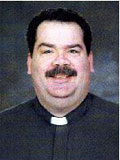
Fr. Darrin Corkum
2012 - To Present |
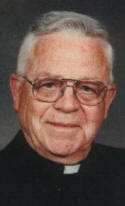
Founding Pastor
Fr. Christopher Bennett
1967 - 1970
Fr. John Markle
1970 - 1973 (died 1976)
Fr. Alfred Caley
1973 - 1976 (died 1994)

Fr. Bonavia
1976 - 1981
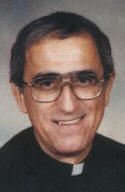
Fr. George Galea
1981 - 1992
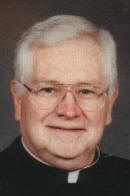
Fr. Gerald Dunn
1992 - 2001
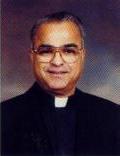
Fr. Edwin D'Souza
2001 - 2012
|



